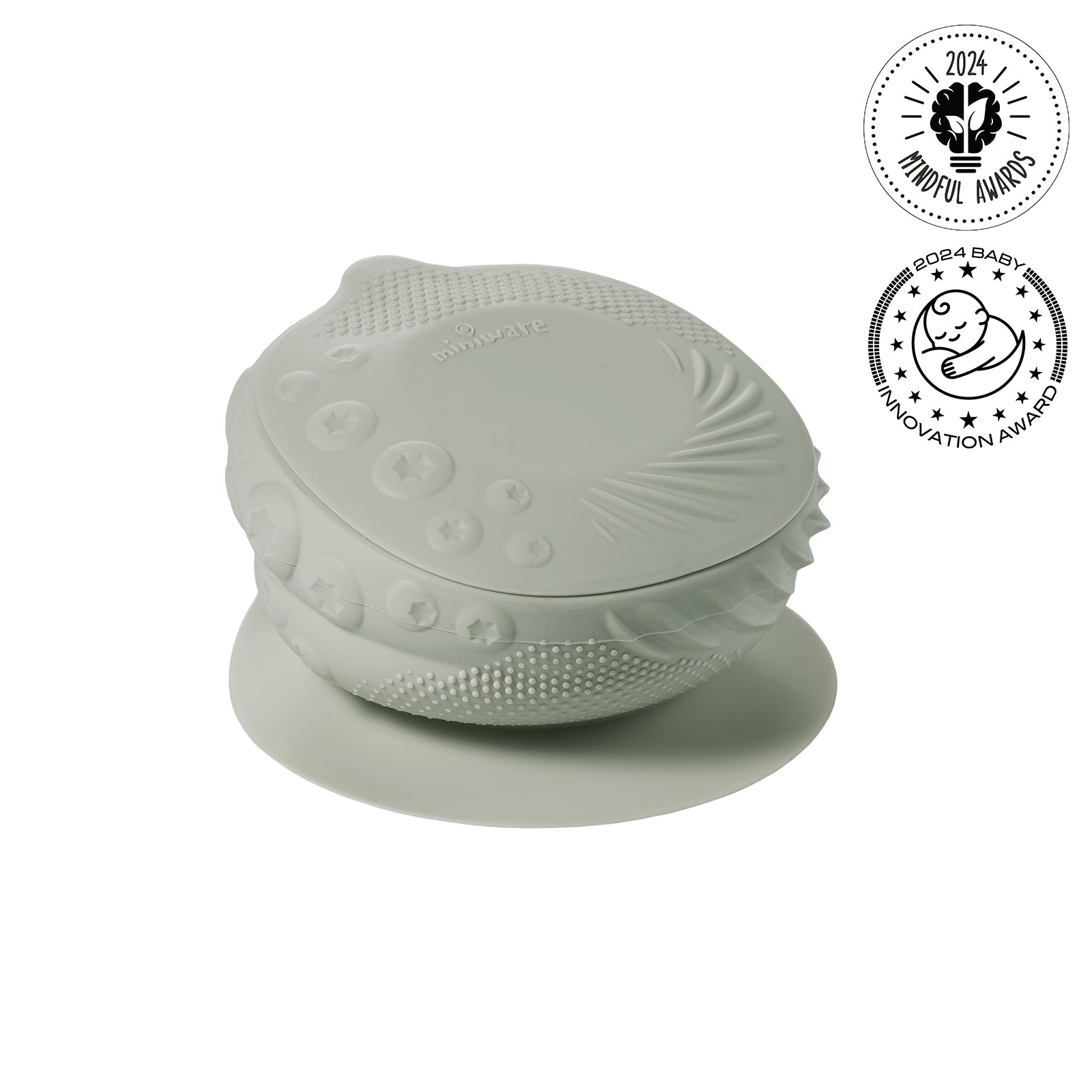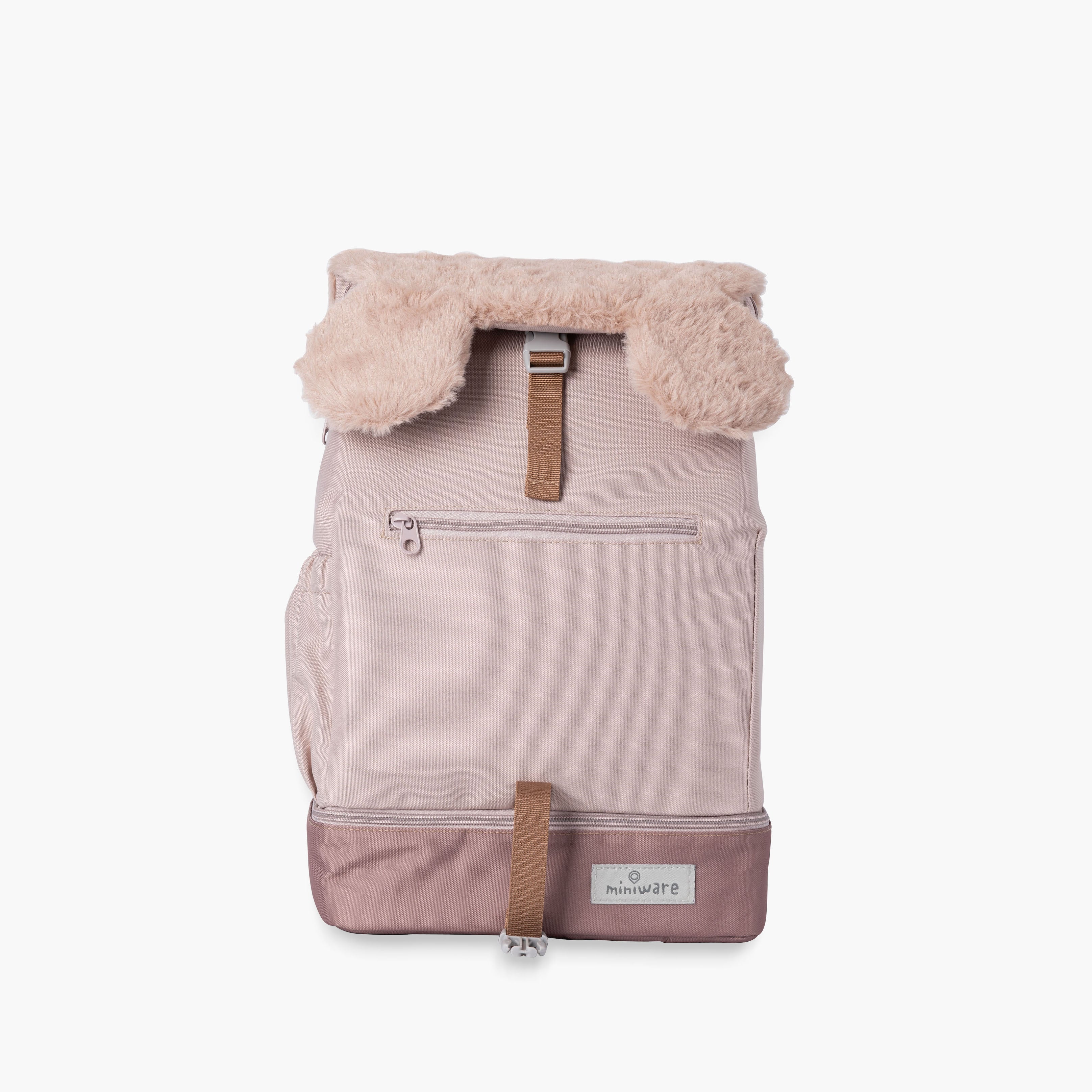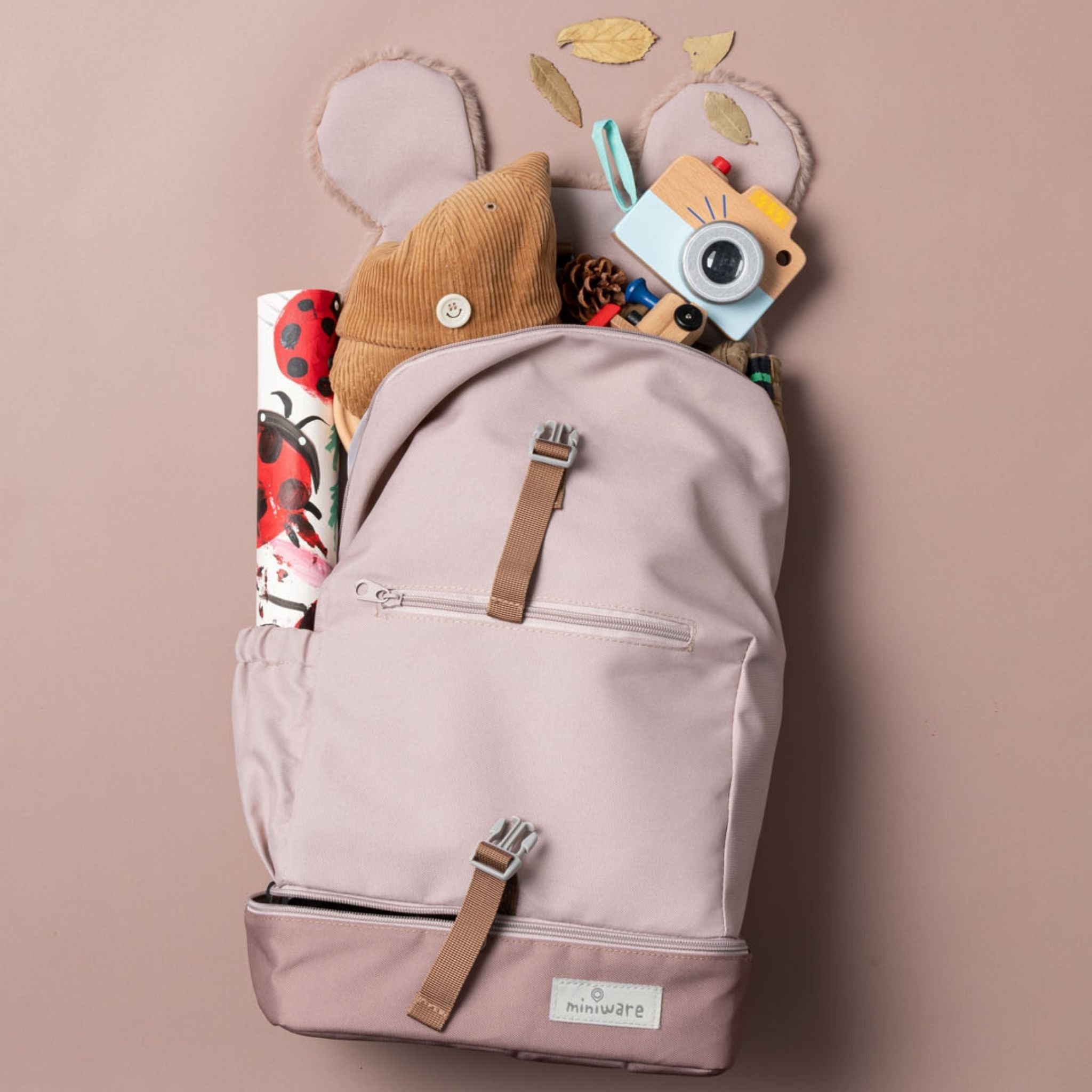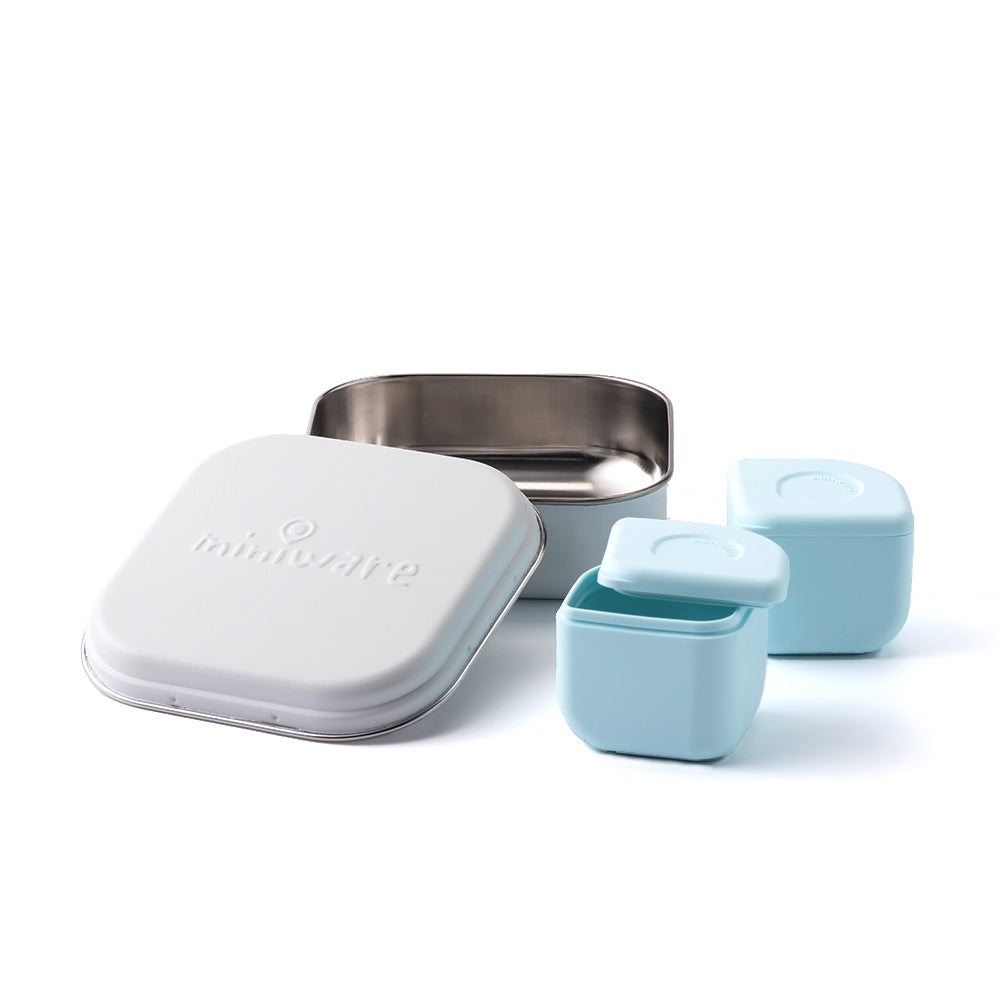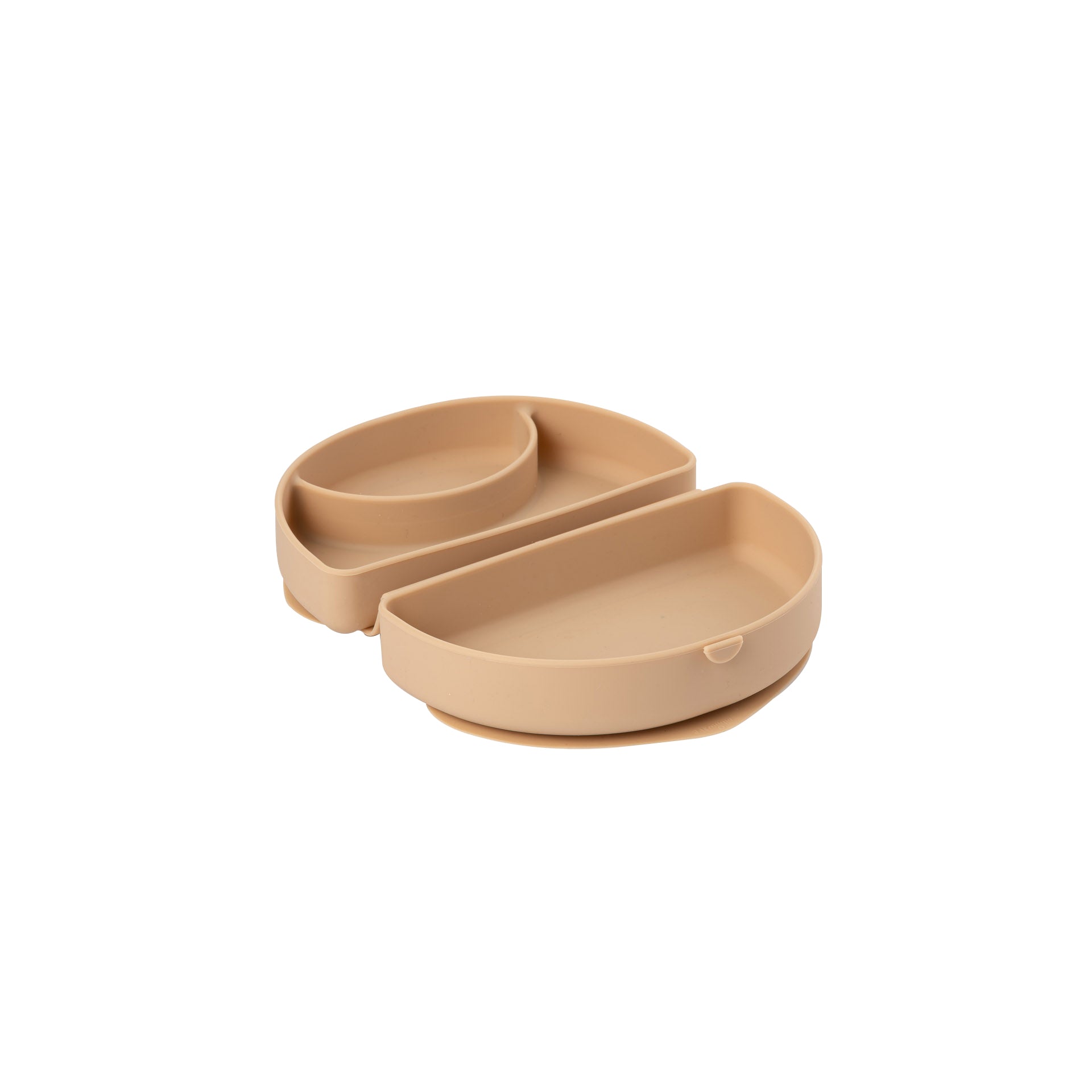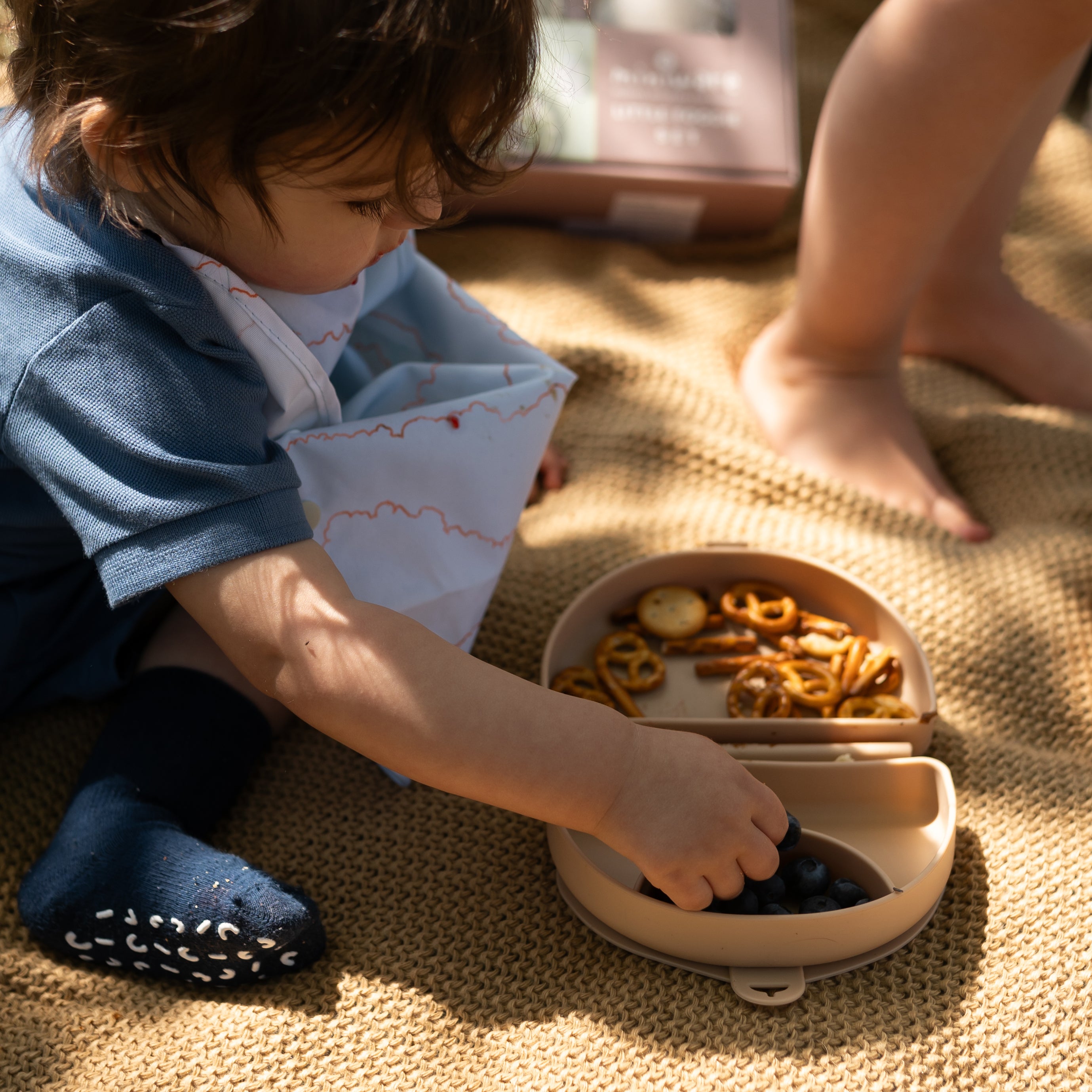At Miniware, we believe that mealtime is more than just eating—it's an opportunity for sensory exploration and development. That's why we've teamed up with pediatric occupational therapist Laurel McMilian from Little Roos Pediatric Therapy to bring you three simple yet powerful ways to engage your child in sensory play during mealtime.
1: Embrace the Mess: Sensory Play Through Food Exploration
Letting your child get messy with food is more than just fun—it's essential for their sensory development. By squishing, smelling, and exploring different textures, tastes, and even sounds of food, your little one builds a strong foundation for healthier eating habits. This hands-on experience can reduce picky eating tendencies and encourage a broader acceptance of various foods. So, the next time your child wants to play with their food, let them dive in! It’s all part of the learning process.
Pro Tip: Use tools like our Sensory Bowl to enhance this experience. The bowl’s textured design keeps children engaged while they explore their food, turning mealtime into a multi-sensory adventure.
2: Get Moving Before Mealtime
Before asking your little one to sit down to eat, encourage some active playtime. Activities like swinging, jumping, or dancing stimulate their balance and body awareness, helping them regulate sensory input. This physical engagement allows them to approach mealtime more calmly, reducing restlessness and enhancing their ability to focus on and engage with their food. Not only does this support their sensory development, but it also promotes healthier eating habits.
Pro Tip: Incorporating a brief, fun activity before meals can make all the difference in how your child interacts with their food.
3: Make Food Visually Appealing
How you present food can greatly influence your child's willingness to try new things. Introduce small portions of less-favored foods alongside familiar favorites, and try presenting meals in creative ways—think fun shapes, or even using a muffin tin as a mini-serving tray. Visual variety and repeated exposure can help children become more comfortable with different foods, leading to more balanced eating habits over time.
Pro Tip: Our Healthy Meal Plate is perfect for this! Its smart divider lets you separate different foods, making it easy to offer a visually appealing and varied meal that encourages exploration.
Engaging in sensory play during mealtime is a powerful tool for your child’s development. By embracing the mess, incorporating movement, and presenting food in an engaging way, you can help your little one build healthy eating habits while having fun.
